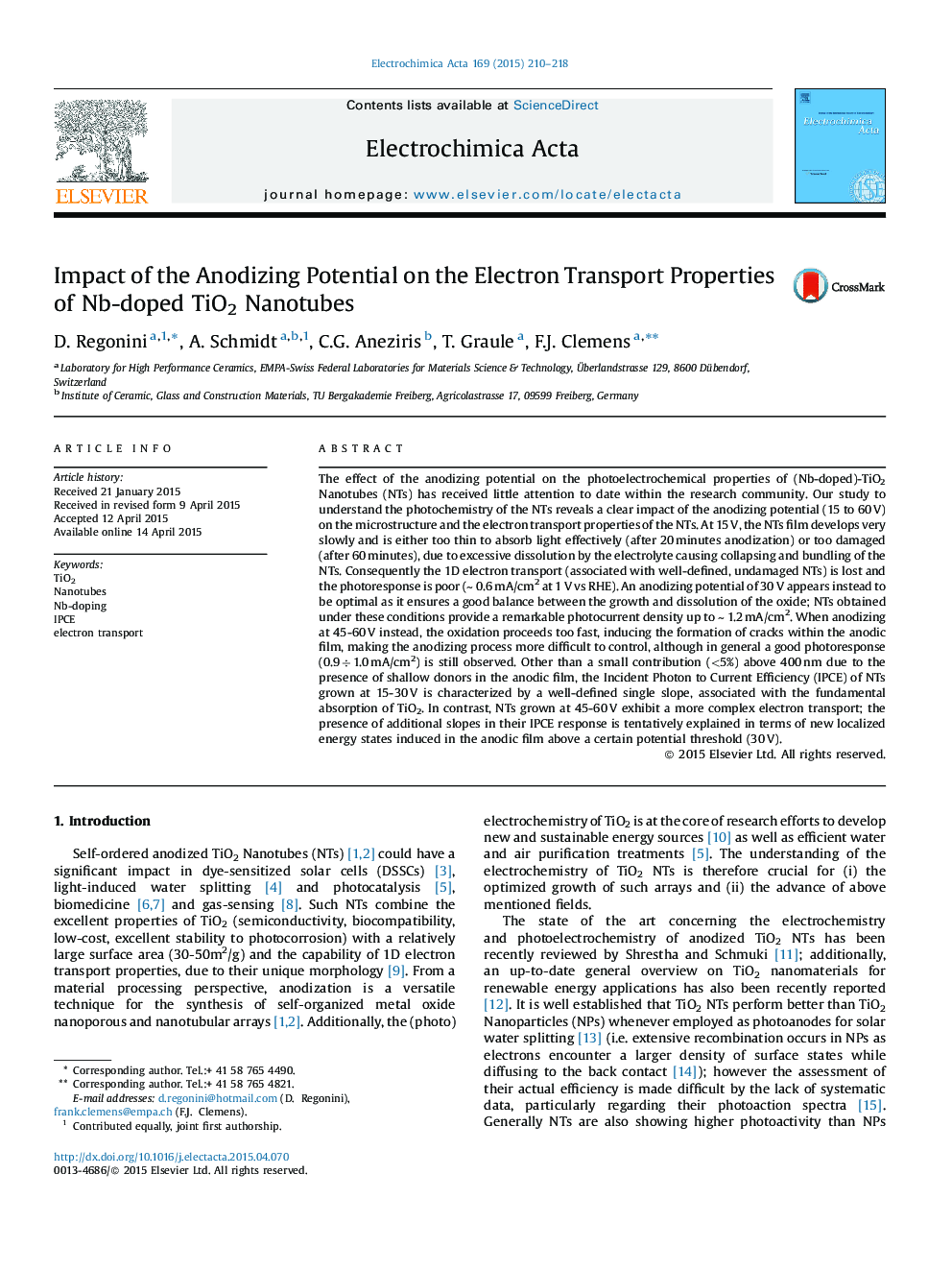| Article ID | Journal | Published Year | Pages | File Type |
|---|---|---|---|---|
| 184113 | Electrochimica Acta | 2015 | 9 Pages |
The effect of the anodizing potential on the photoelectrochemical properties of (Nb-doped)-TiO2 Nanotubes (NTs) has received little attention to date within the research community. Our study to understand the photochemistry of the NTs reveals a clear impact of the anodizing potential (15 to 60 V) on the microstructure and the electron transport properties of the NTs. At 15 V, the NTs film develops very slowly and is either too thin to absorb light effectively (after 20 minutes anodization) or too damaged (after 60 minutes), due to excessive dissolution by the electrolyte causing collapsing and bundling of the NTs. Consequently the 1D electron transport (associated with well-defined, undamaged NTs) is lost and the photoresponse is poor (~ 0.6 mA/cm2 at 1 V vs RHE). An anodizing potential of 30 V appears instead to be optimal as it ensures a good balance between the growth and dissolution of the oxide; NTs obtained under these conditions provide a remarkable photocurrent density up to ~ 1.2 mA/cm2. When anodizing at 45-60 V instead, the oxidation proceeds too fast, inducing the formation of cracks within the anodic film, making the anodizing process more difficult to control, although in general a good photoresponse (0.9 ÷ 1.0 mA/cm2) is still observed. Other than a small contribution (<5%) above 400 nm due to the presence of shallow donors in the anodic film, the Incident Photon to Current Efficiency (IPCE) of NTs grown at 15-30 V is characterized by a well-defined single slope, associated with the fundamental absorption of TiO2. In contrast, NTs grown at 45-60 V exhibit a more complex electron transport; the presence of additional slopes in their IPCE response is tentatively explained in terms of new localized energy states induced in the anodic film above a certain potential threshold (30 V).
